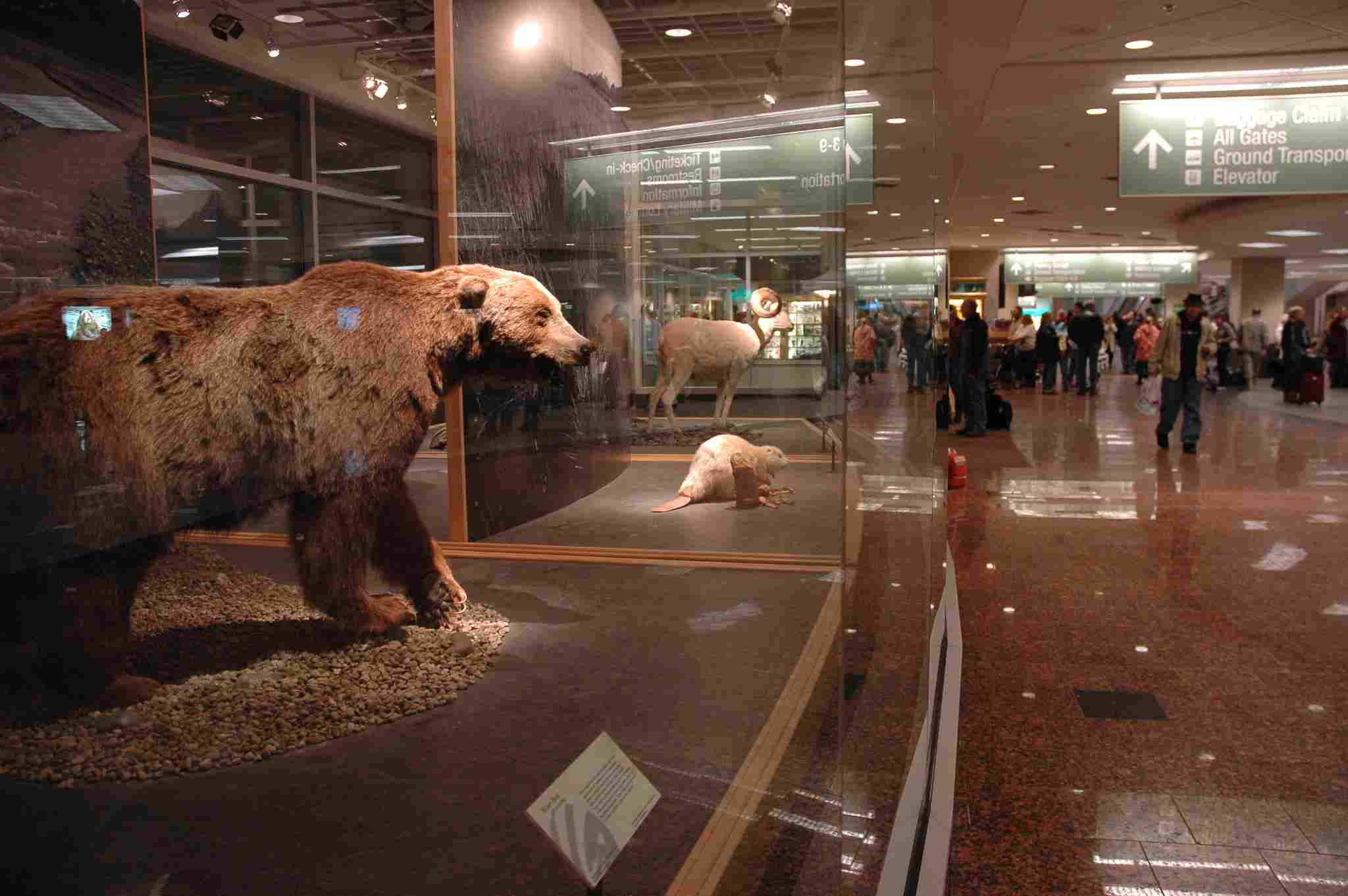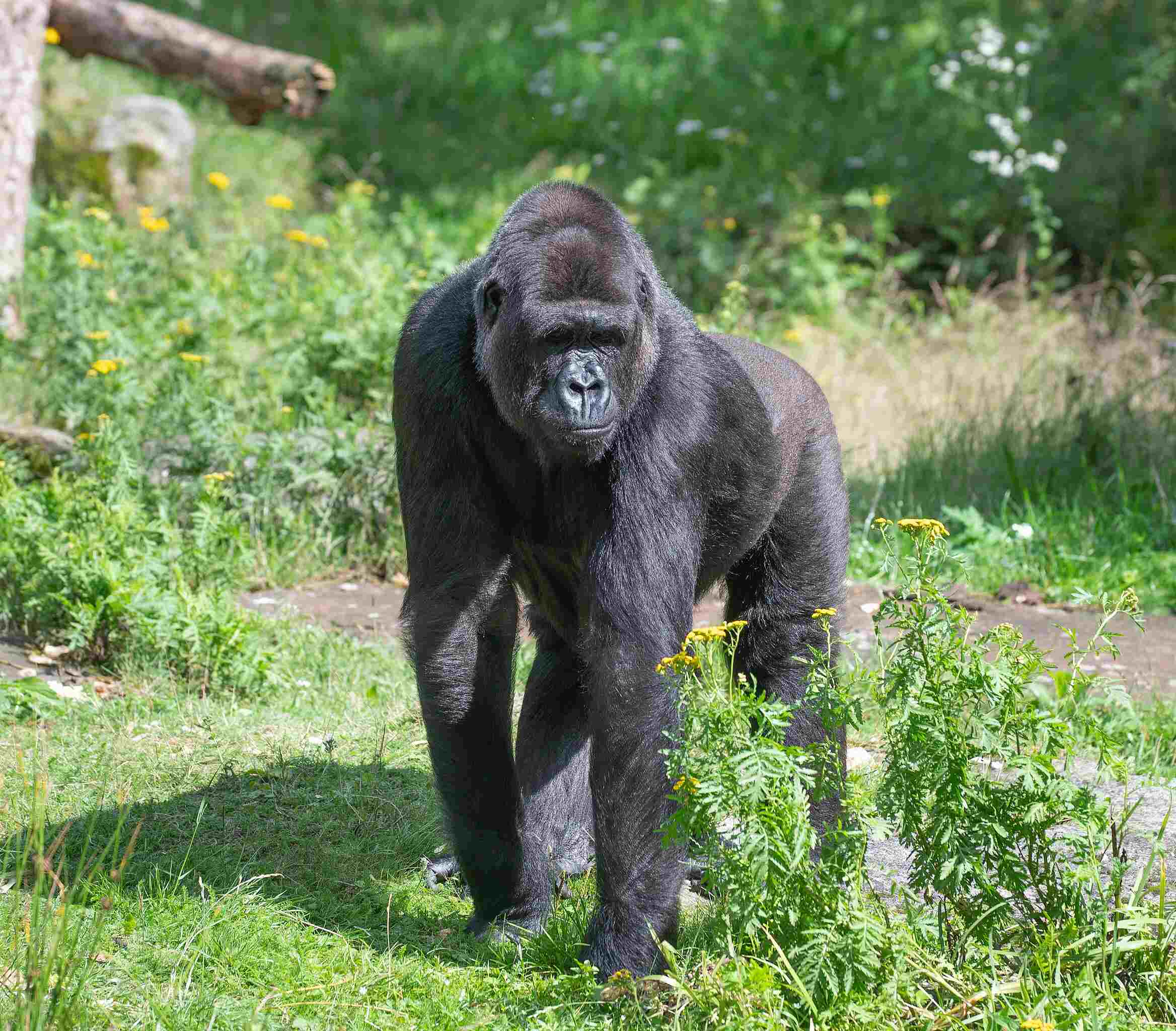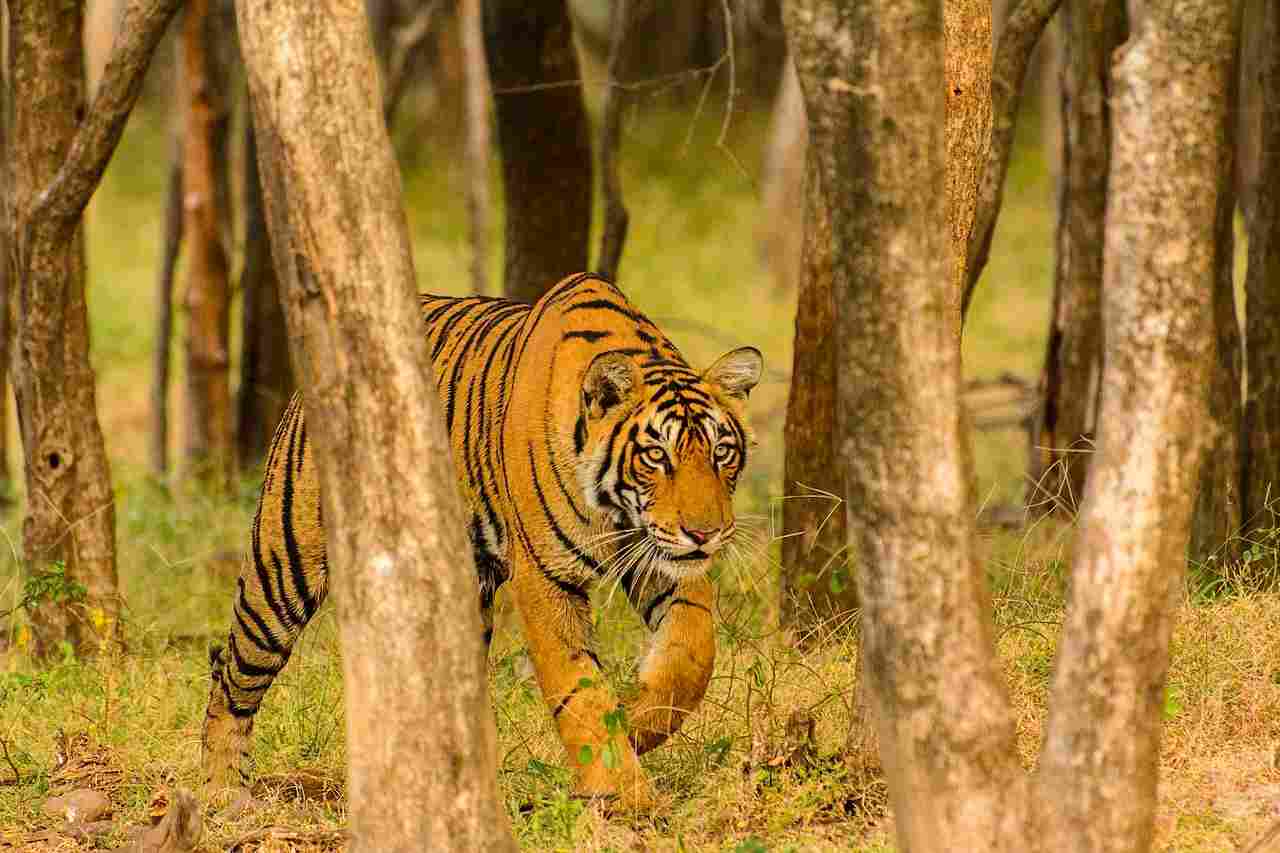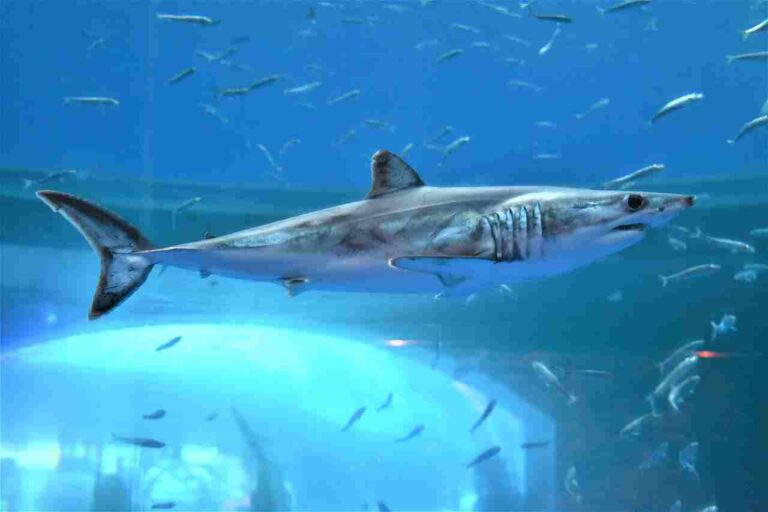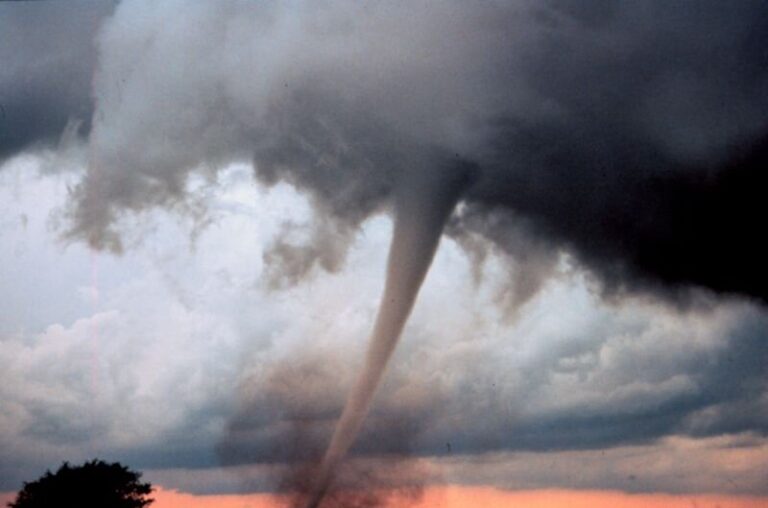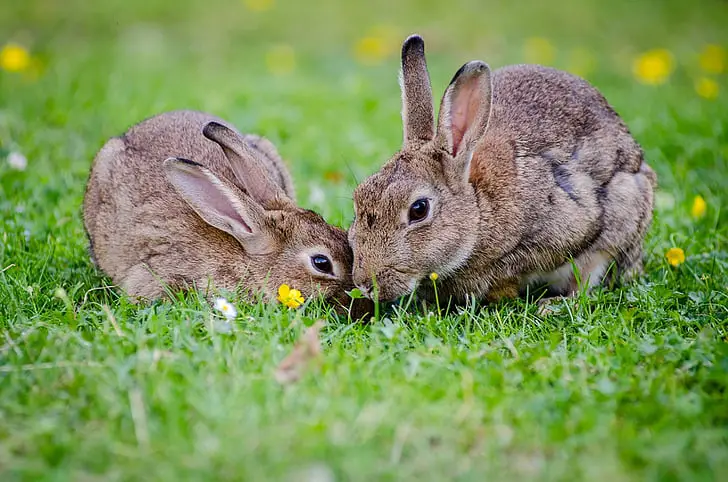Gorilla Vs Bear Who Would Win, Overall Comparison
A theoretical confrontation between a gorilla and a bear, considering various factors such as size, strength, intelligence, and predatory features, offers an interesting exploration of the dynamics between these formidable creatures. Gorillas, known for their intelligence, immense strength, and aggressiveness, face off against bears, where a bear of equal or slightly larger size may succumb to a gorilla’s superior attributes, while larger bears like the Kodiak or polar may use their immense size, weight, and predatory features to prevail.
Gorilla vs Bear Fight Hypothesis: Assessing the Likely Victor in a Confrontation
In a hypothetical scenario involving a gorilla and a bear, the gorilla is likely to emerge victorious against a bear of equal or slightly larger size, utilizing its superior intelligence, immense strength, aggressiveness, and formidable bite force. However, larger bears such as the Kodiak or polar are expected to defeat a gorilla through their sheer size, weight, and predatory features.
I). Gorilla vs Bear of Equal or Slightly Larger Size:
– The gorilla’s superior intelligence, immense strength, and aggressiveness can give it an advantage in a one-on-one confrontation against a bear of equal or slightly larger size. The gorilla’s ability to strategize, coupled with its strength and aggressiveness, may enable it to outmaneuver and overcome the bear.
II). Utilizing Superior Attributes:
– Gorillas, possessing formidable bite force and the capability to use tools, may employ these superior attributes to gain an upper hand. Their intelligence allows them to assess the situation and employ strategic approaches in a confrontation with a bear.
III). Larger Bears – Kodiak or Polar:
– Larger bears, such as the Kodiak or polar bear, are likely to defeat a gorilla due to their immense size, weight, and predatory features. The sheer physical power and predatory instincts of these larger bears would pose a significant challenge for a gorilla to overcome.
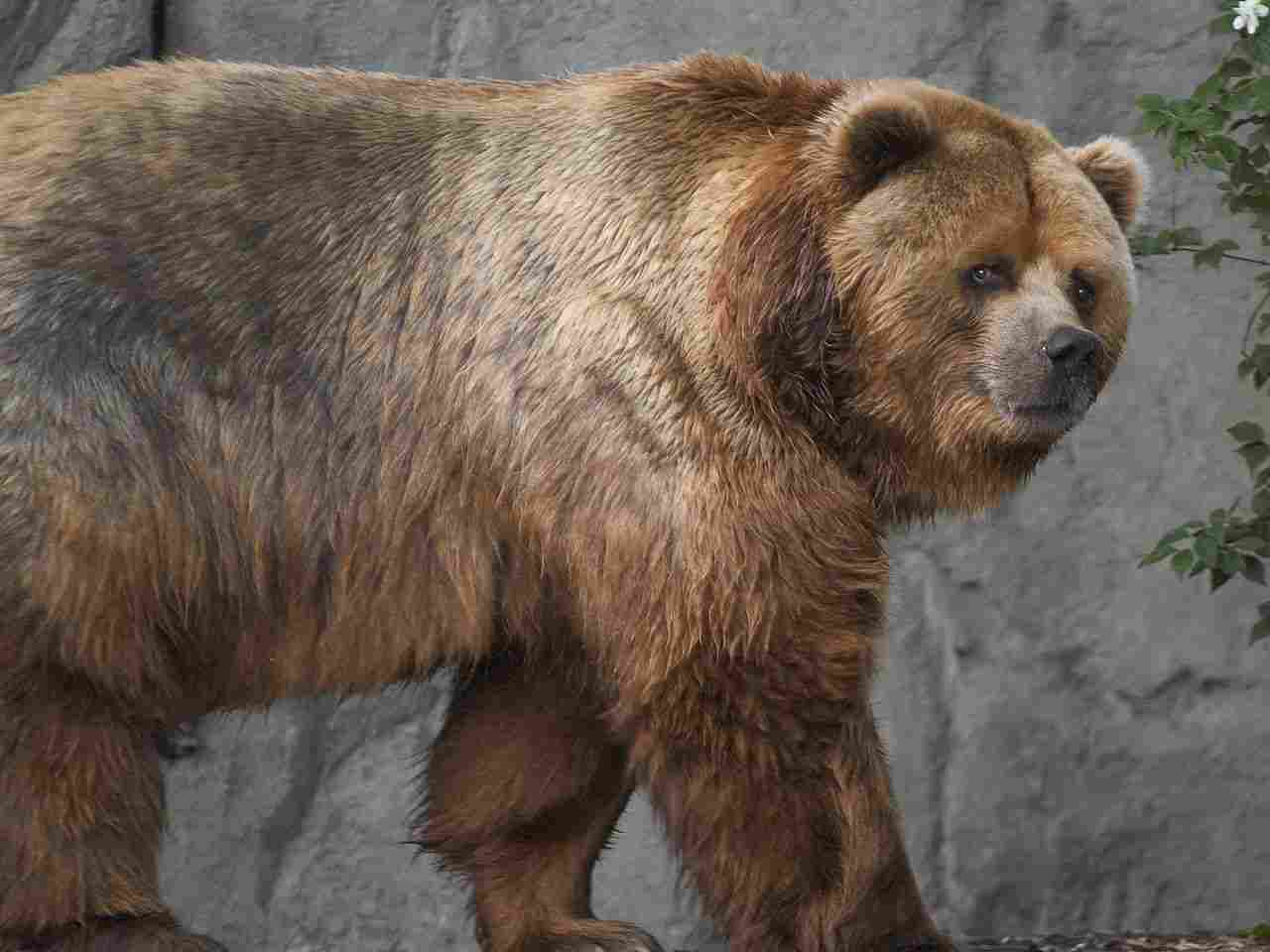
IV). Predatory Features:
– The Kodiak or polar bear’s size, weight, and predatory features, including powerful claws and a strong bite, create a formidable package that is challenging for a gorilla to counter. In this scenario, the bear’s predatory adaptations become decisive in determining the outcome.
V). Overall Dynamics:
– In this hypothetical scenario, a gorilla’s victory against a bear of equal or slightly larger size hinges on its superior intelligence, immense strength, aggressiveness, and bite force. However, when facing much larger and heavier bears like the Kodiak or polar, the gorilla is likely to succumb to the sheer size, weight, and predatory features of these formidable adversaries.
*Details of Comparison
| Criteria | Gorilla | Bear |
| Taxonomy | Family: Hominidae | Family: Ursidae |
| Appearance | Primate with robust build |
Varied appearances, adapted to habitats
|
| Size | Smaller, males around 5.6-5.9 feet |
Generally larger; brown bears >10 feet
|
| Weight | Males around 300-400 pounds |
Varies by species; brown bears 500-1200 pounds
|
| Bite Force (PSI) | Estimated 1300-1500 PSI |
Varies; brown bears 1200-1500 PSI
|
| Physical Offensive Advantages | Manual dexterity, canine teeth |
Claws, powerful jaws, enhanced smell
|
| Physical Defensive Advantages | Muscular build, tough skin, displays |
Strong and agile, climbing ability
|
| Speed | Approximately 20 mph |
Varies by species; brown bears up to 30 mph
|
| Agility | Agile climbers |
Surprising agility, especially in climbing trees
|
| Overall Physical Capacity | Terrestrial and arboreal locomotion |
Versatile physical capabilities
|
| Habitat Preference(s) | Dense forests, lowland and mountainous |
Diverse habitats; forests, tundra, mountains
|
| Tracks | Knuckle-walking, opposable thumbs |
Large paw prints with claw marks
|
| Lifespan | Typically 35-40 years in the wild |
Varies; some up to 30 years, influenced by species
|
| Mode of Feeding | Primarily herbivorous, occasional insects |
Omnivorous diet, varies by species
|
| Intelligence | High cognitive abilities, problem-solving |
Intelligence in foraging and adaptation
|
| Social Behavior | Family groups, strong bonds |
Generally solitary, exceptions in polar bears
|
| Mode of Reproduction | Polygynous mating, dominant males |
Mating during specific seasons, varies by species
|
| Parental Behavior | Strong maternal care, communal parenting |
Individual maternal care, teaching survival skills
|
| Proximity to Human-Inhabited Areas | Forest edges, limited interaction |
Various environments, potential conflicts
|
| Behavior Toward Humans | Generally shy, aggression rare |
Responses vary, can be defensive or curious
|
| Danger Posed to Humans | Rare danger, retreat likely |
Potential danger, especially in brown and polar bears
|
| Associated Precautions | Habitat protection, tourist guidelines |
Education on bear behavior, bear-proofing food storage
|
| Conservation Status | Varied; endangered (e.g., mountain gorilla) |
Varies by species; polar bears vulnerable, brown bears threatened
|
Key Points
- Gorillas and bears share some similarities in physical capabilities, intelligence, and parental care.
- Differences exist in size, habitat preferences, social behavior, and ecological adaptations.
- Conservation efforts must consider specific challenges faced by each species, addressing factors like habitat preservation and minimizing human-wildlife conflicts.
- Both species play essential roles in their respective ecosystems, influencing vegetation dynamics, predator-prey relationships, and overall ecological balance.
1. Taxonomy:
Gorilla:
Family: Hominidae
Genus: Gorilla
Species: Gorilla beringei (Mountain Gorilla), Gorilla gorilla (Western Gorilla)
Bear:
Family: Ursidae
Various species, including Ursus arctos (Brown Bear), Ursus maritimus (Polar Bear), Ursus americanus (American Black Bear)
2. Appearance:
Gorilla:
Robust build with broad chest and shoulders.
Covered in coarse black or brown fur.
Prominent brow ridge and large sagittal crest in males.
Bear:
Varied appearances; brown bears have humped shoulders, polar bears are white, and black bears are smaller.
Fur color ranges from white to black.
Short, rounded ears and a distinctive snout.
Comparison: Gorillas are primarily terrestrial with a distinctive primate appearance, while bears display more diversity in appearance, adapted to their respective habitats.
Ecological Implications: Gorilla appearance reflects adaptations to forest life, aiding in tree climbing and navigating dense vegetation. Bear appearances align with their ecological niches, providing camouflage in different habitats.
3. Gorilla vs Bear Size Comparison:
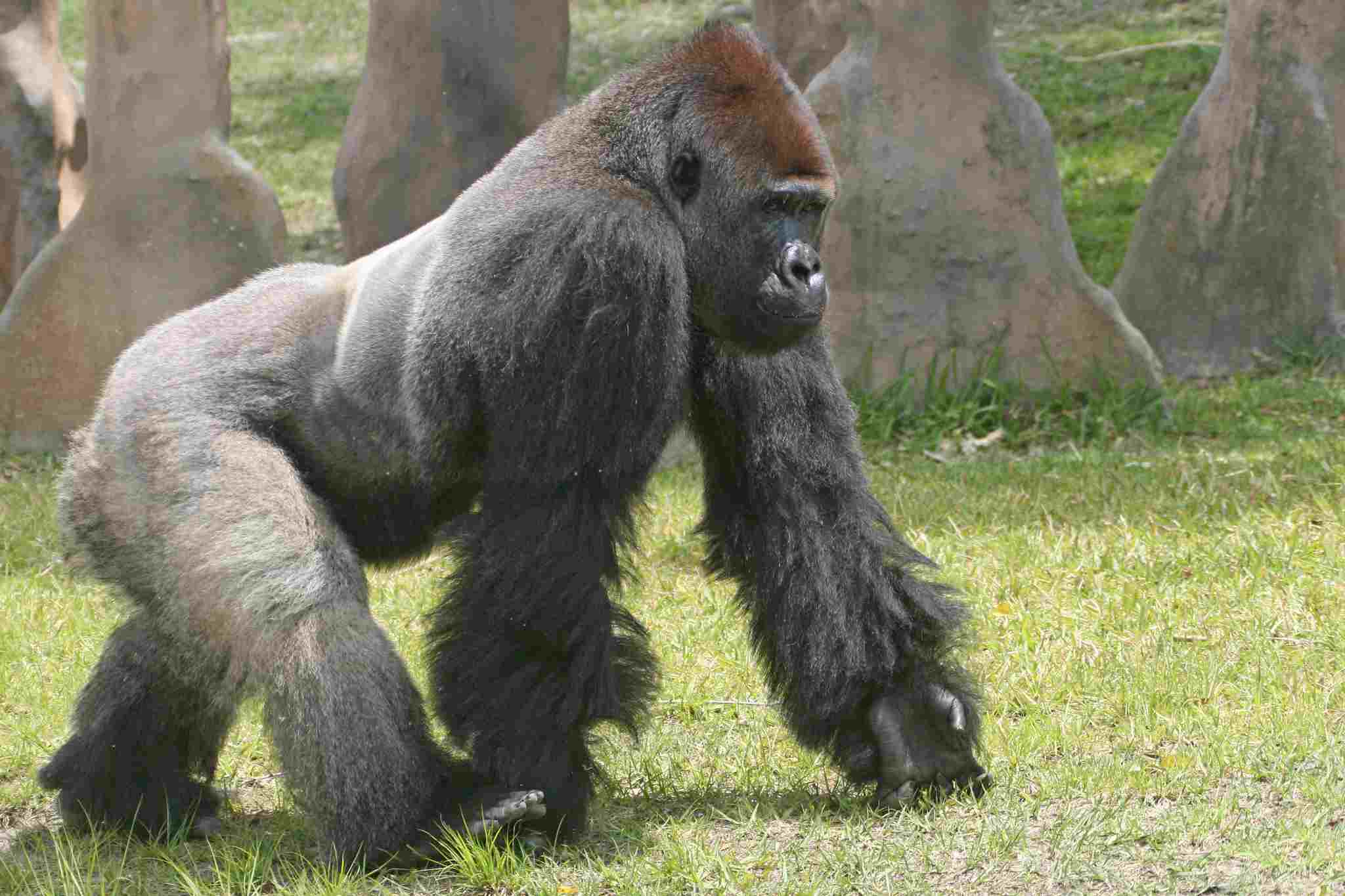
Gorilla:
Adult males: 5.6 to 5.9 feet tall when standing.
Adult females: Smaller, around 4.6 to 5.6 feet.
Bear:
Brown bears: Large individuals can stand over 10 feet tall.
Polar bears: Largest terrestrial carnivores, males reaching up to 11 feet when standing.
Black bears: Smaller, with males standing about 3 to 7 feet tall.
Comparison: Bears, especially brown and polar bears, generally surpass gorillas in size, showcasing adaptations for their roles as apex predators in various ecosystems.
Ecological Implications: Size is often correlated with the ecological niche; larger bears may have a broader range and be more formidable predators.
4. Weight:
Gorilla:
Males: 300 to 400 pounds.
Females: About half the weight of males.
Bear:
Brown bears: Males weigh between 500 to 1,200 pounds.
Polar bears: Males can weigh up to 1,500 pounds.
Black bears: Males typically weigh between 200 to 600 pounds.
Comparison: Bears, particularly brown and polar bears, generally outweigh gorillas significantly, highlighting differences in their ecological roles and adaptations.
Ecological Implications: Weight influences the foraging behavior and dietary requirements, shaping the ecological impact each species has on its environment.
5. Bite Force (PSI):
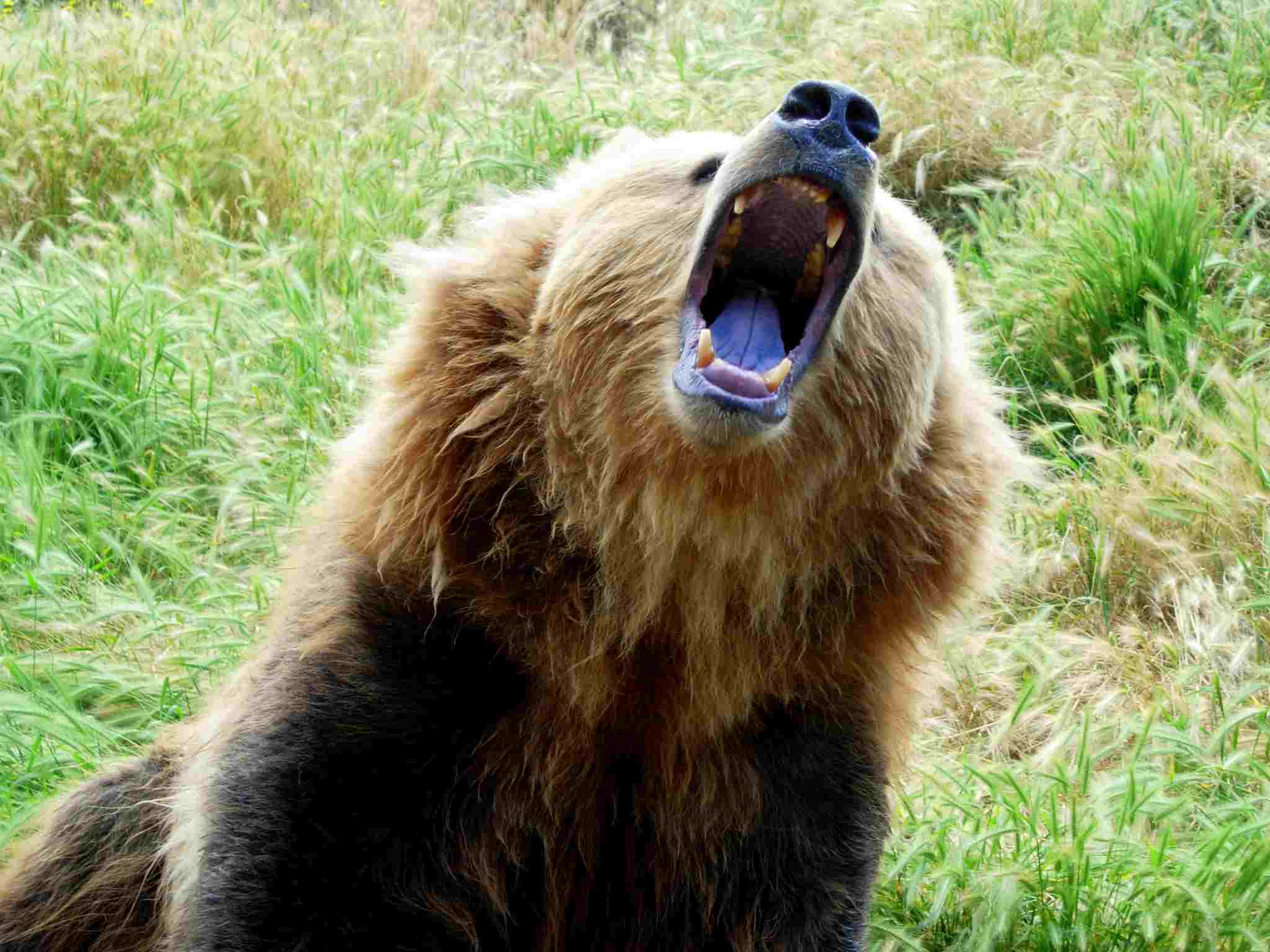
Gorilla:
Estimated bite force around 1,300 to 1,500 PSI.
Bear:
Brown bears: Bite force estimated around 1,200 to 1,500 PSI.
Polar bears: Comparable bite force to brown bears.
Black bears: Slightly less, around 600 to 900 PSI.
Comparison: Gorillas and bears have powerful bites, but the differences in PSI reflect variations in dental adaptations and feeding strategies.
Ecological Implications: Bite force relates to hunting and foraging strategies, influencing the species’ position in the food chain and ecological interactions.
6. Physical Offensive Advantages:
Gorilla:
Powerful upper body strength and large canine teeth.
Use of hands and arms for striking.
Bear:
Strong claws and jaws capable of delivering powerful bites.
Enhanced sense of smell aids in tracking prey.
Comparison: Both gorillas and bears possess formidable offensive capabilities, but gorillas rely more on manual dexterity, while bears use their claws and jaws.
Ecological Implications: Offensive capabilities are adaptations for hunting or foraging, contributing to the species’ survival in their respective ecosystems.
7. Physical Defensive Advantages:
Gorilla:
Muscular build and tough skin.
Can intimidate predators with displays and vocalizations.
Bear:
Strong and agile; can climb trees to escape threats.
Thick fur and tough hide provide some protection.
Comparison: Gorillas and bears both have effective defensive mechanisms, utilizing their physical attributes to deter threats from predators.
Ecological Implications: These defenses contribute to the species’ survival by reducing vulnerability to predators and other environmental dangers.
8. Speed (Km/hour or Mile/hour):
Gorilla:
Approximately 20 miles per hour (32 km/h) in short bursts.
Bear:
Varies by species; brown bears can reach speeds of 30 miles per hour (48 km/h).
Comparison: Bears generally have a higher top speed than gorillas, potentially reflecting different ecological roles and predator-prey dynamics.
Ecological Implications: Speed is crucial for pursuit or evasion, influencing hunting strategies and survival in diverse ecosystems.
9. Agility:
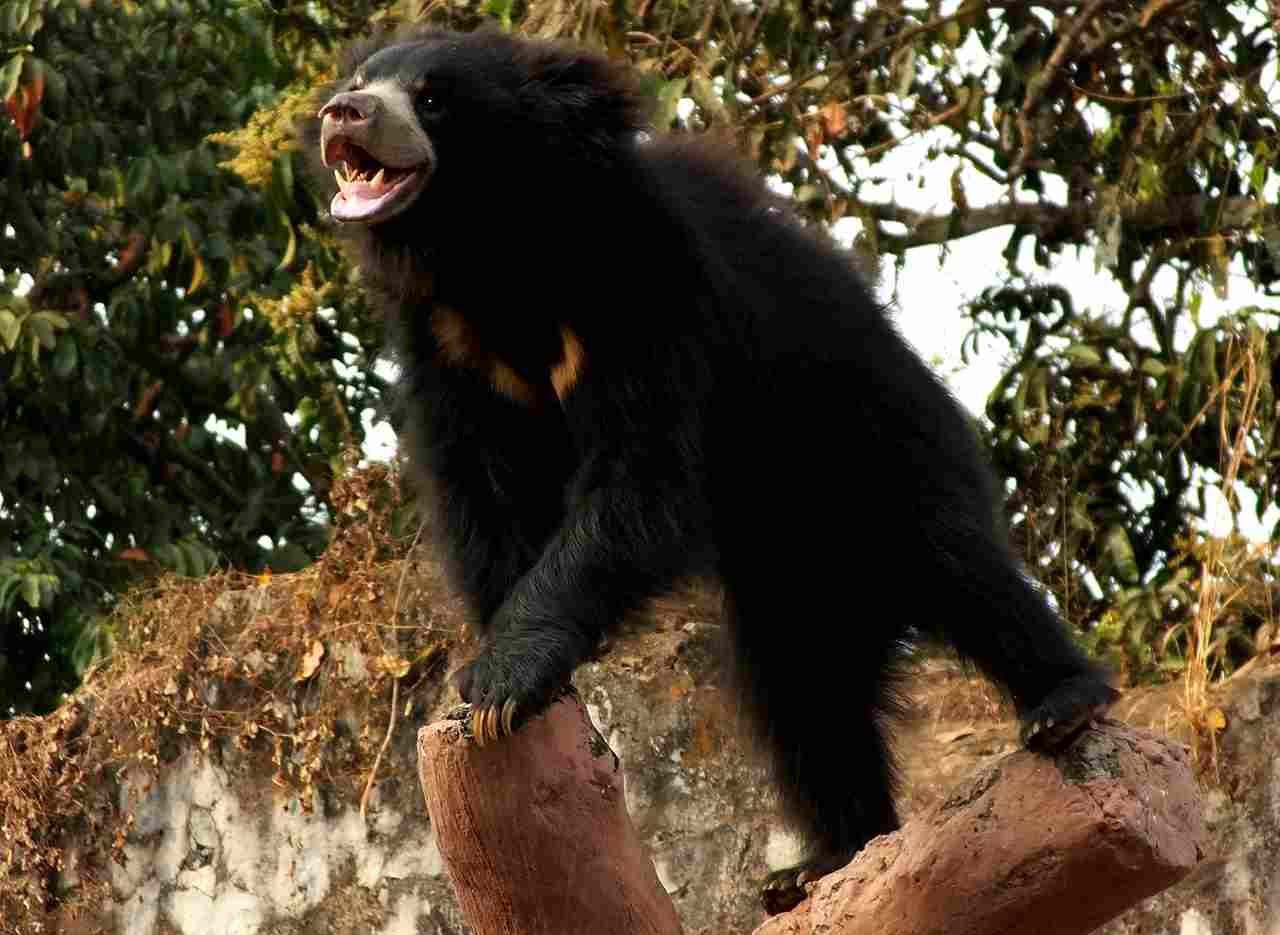
Gorilla:
Agile climbers; can move through trees with ease.
Bear:
Despite their size, bears exhibit surprising agility, particularly in climbing trees and navigating rough terrain.
Comparison: Gorillas display agility in arboreal environments, while bears, though primarily terrestrial, can still exhibit impressive agility.
Ecological Implications: Agility is essential for navigating varied landscapes, accessing resources, and avoiding predators, contributing to the species’ ecological niche.
10. Overall Physical Capacity:
Gorilla:
Well-adapted for terrestrial and arboreal locomotion.
Exceptional strength in the upper body.
Bear:
Versatile physical capabilities for different habitats.
Strong limbs and endurance for long-distance travel.
Comparison: Gorillas excel in climbing and ground mobility, while bears showcase versatility in adapting to diverse environments.
Ecological Implications: The overall physical capacity of each species contributes to their ability to thrive in specific ecological niches and environments.
10(b). Details, Comparison, and Ecological Implications of Gorilla vs. Bear Strength:

I). Gorilla Strength:
Details:
Gorillas possess impressive upper body strength, particularly in the arms and shoulders.
Their robust physique allows them to climb trees, swing between branches, and navigate through dense vegetation.
Comparison:
While gorillas are exceptionally strong, their strength is more specialized for climbing and terrestrial activities within their forest habitats.
Ecological Implications:
Gorilla strength is adapted to the challenges of their environment, enabling efficient movement in the dense forest and aiding in foraging for vegetation.
II). Bear Strength:
Details:
Bears are known for their overall strength, with powerful limbs and a robust body structure.
The strength of bears is evident in their ability to dig, climb, swim, and carry heavy prey or objects.
Comparison:
Bears, especially species like brown bears and polar bears, generally surpass gorillas in sheer physical strength.
Factors Behind Bear Strength:
Muscle Mass: Bears have a higher muscle mass, particularly in their shoulders and forelimbs, contributing to their strength.
Bone Structure: The skeletal structure of bears, including their large and powerful limbs, enhances their mechanical advantage for strength.
Diet: Bears, being omnivores, have a varied diet that includes protein-rich sources, promoting muscle development and strength.
Habitat Demands: The diverse habitats bears inhabit require them to be adaptable and strong, contributing to their overall physical prowess.
Ecological Implications:
Bear strength is crucial for their survival in different environments, aiding in activities such as hunting, foraging, and defending territories.
III). Overall Comparison:
Details:
Gorillas rely on strength for activities like climbing, moving through dense vegetation, and displays of dominance within social structures.
Bears utilize strength for various ecological activities, including digging for food, climbing trees, and, in some cases, hunting.
Ecological Implications:
The differences in strength between gorillas and bears are a result of their unique adaptations to their respective habitats and ecological roles.
Gorillas’ strength is specialized for arboreal and terrestrial locomotion within forests, while bears’ strength reflects their adaptability to diverse environments.
11. Habitat Preference(s):
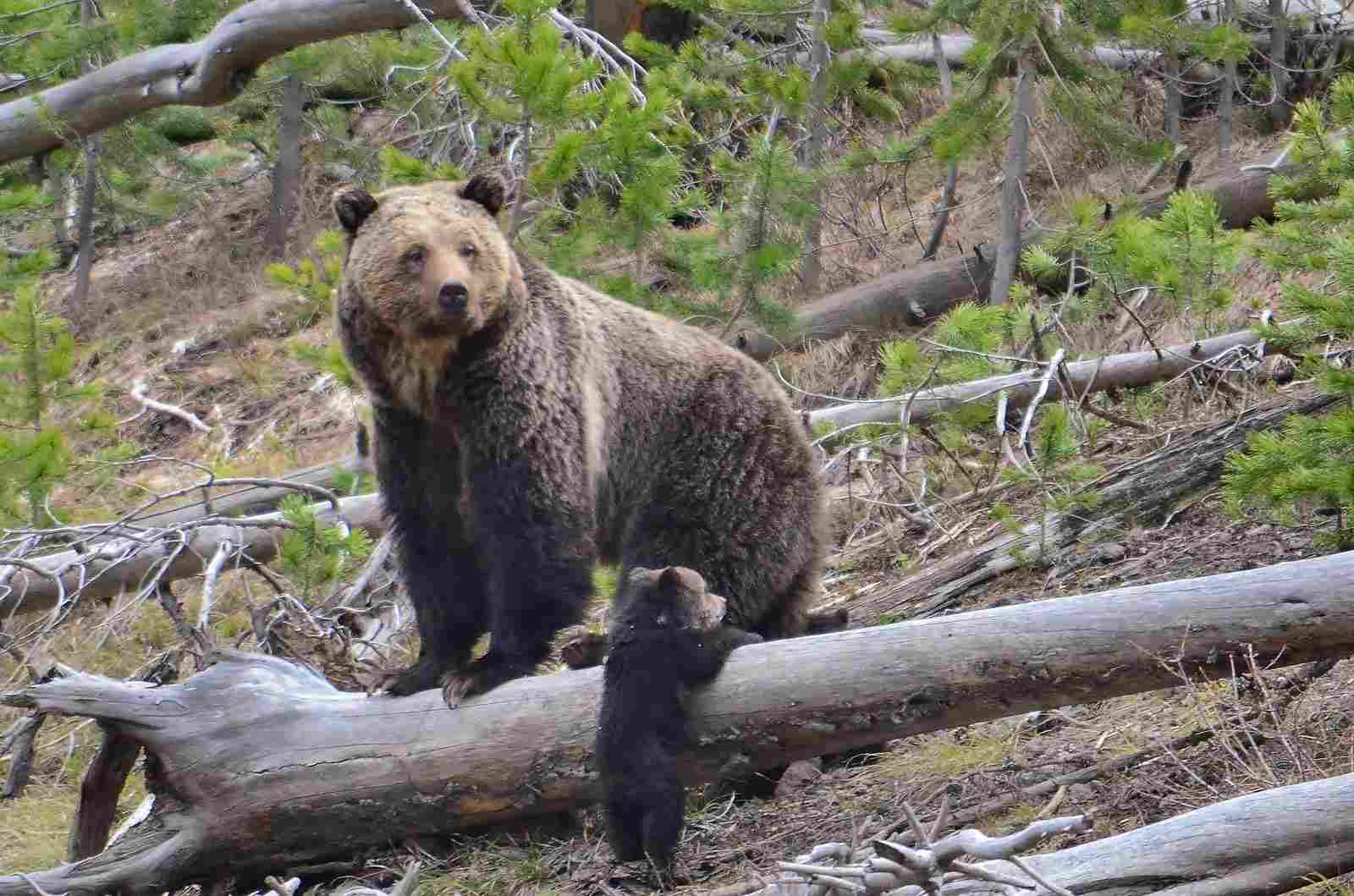
Gorilla:
Dense forests, both lowland and mountainous.
Prefer regions with abundant vegetation for feeding.
Bear:
Diverse habitats include forests, tundra, and mountains.
Adaptability allows for occupancy in various ecosystems.
Comparison: While gorillas have a more specific habitat preference, bears exhibit adaptability to a broader range of environments.
Ecological Implications: Habitat preference influences the species’ impact on the ecosystem and their role in maintaining ecological balance.
12. Tracks:
Gorilla:
Distinctive hand and footprints with opposable thumbs evident in tracks.
Often travel in a knuckle-walking fashion.
Bear:
Large, rounded paw prints with prominent claw marks.
Different species have variations in track size and shape.
Comparison: Gorilla tracks reflect their unique knuckle-walking locomotion, while bear tracks showcase adaptations for different terrains.
Ecological Implications: Tracking provides insights into the species’ movement patterns, behavior, and interaction with the environment.
13. Lifespan:
Gorilla:
Wild lifespan typically 35 to 40 years.
Bear:
Lifespan varies by species; brown bears can live up to 30 years, polar bears around 20 to 30 years, and black bears up to 25 years.
Comparison: Gorillas generally have a longer lifespan compared to bears, with some bear species having shorter lifespans due to environmental factors.
Ecological Implications: Lifespan influences reproductive strategies, population dynamics, and the species’ overall impact on the ecosystem.
14. Mode of Feeding:
Gorilla:
Primarily herbivorous, consuming leaves, fruits, and vegetation.
Occasionally eat insects.
Bear:
Omnivorous diet; varies by species.
Brown bears: Fish, berries, vegetation.
Polar bears: Predominantly carnivorous, feeding on seals.
Black bears: Varied diet, including berries, insects, and small mammals.
Comparison: Gorillas are predominantly herbivores, while bears exhibit a more flexible omnivorous diet, adapting to the available resources in their habitats.
Ecological Implications: Feeding habits impact vegetation dynamics and influence the balance of other species within the ecosystem.
15. Intelligence:
Gorilla:
Known for high cognitive abilities and problem-solving skills.
Bear:
Exhibit intelligence in foraging strategies and adapting to changing environments.
Comparison: Both gorillas and bears demonstrate intelligence, with gorillas often showcasing more complex cognitive behaviors.
Ecological Implications: Intelligence contributes to the species’ ability to navigate and respond to environmental challenges, influencing their ecological role.
16. Social Behavior:
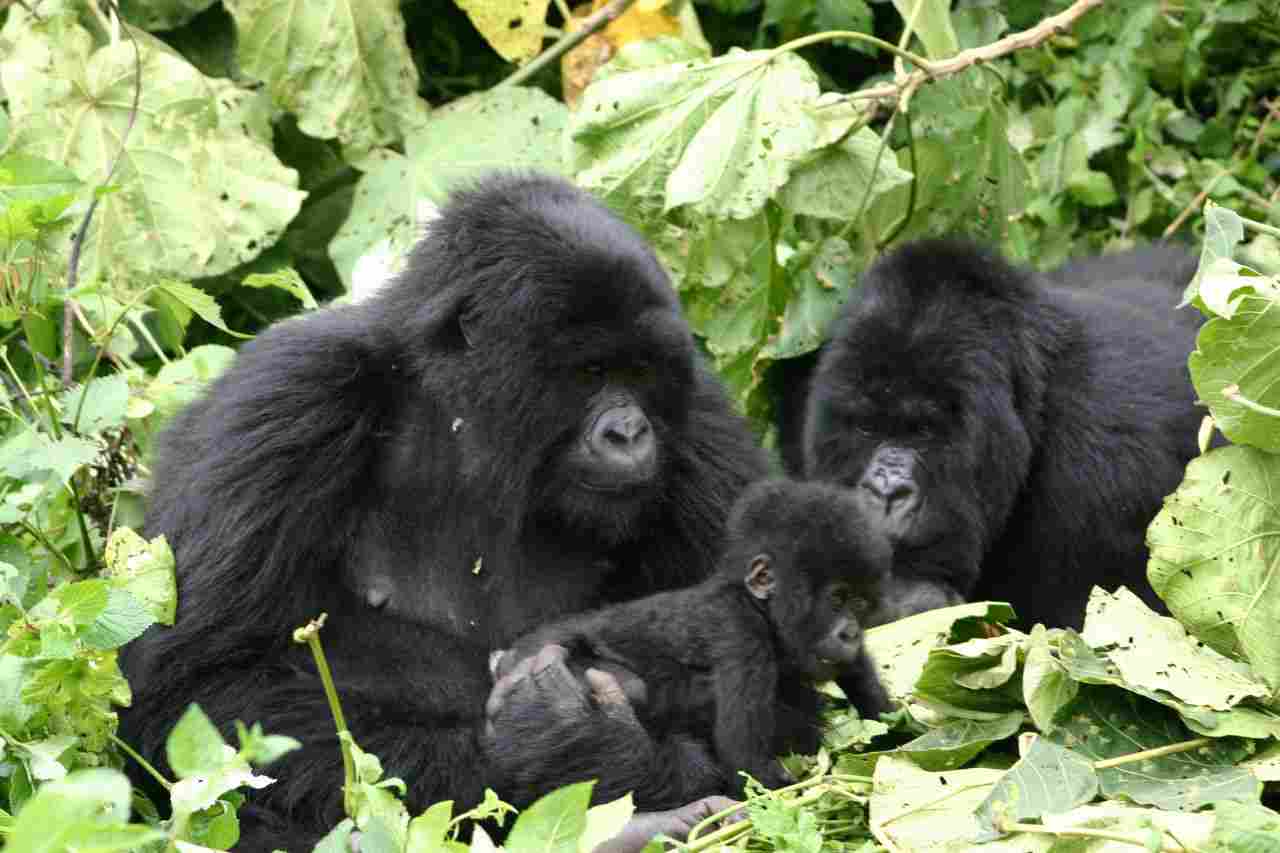
Gorilla:
Live in family groups led by a dominant male (silverback).
Social structure involves strong bonds and cooperation.
Bear:
Generally solitary, except during mating or with cubs.
Polar bears can be an exception, displaying more social interactions.
Comparison: Gorillas exhibit complex social structures with strong family bonds, while bears are generally more solitary, adapting to different ecological pressures.
Ecological Implications: Social behavior influences group dynamics, cooperation, and competition within the species, shaping their impact on the ecosystem.
17. Mode of Reproduction:
Gorilla:
Polygynous mating system with dominant males mating with multiple females.
Gestation period around 8.5 months.
Bear:
Mating occurs during specific seasons.
Gestation periods vary; brown bears around 6–8 months, polar bears around 8 months, and black bears around 7 months.
Comparison: Gorillas have a more stable social structure with dominant males, while bears display diverse mating behaviors based on species and ecological conditions.
Ecological Implications: Reproductive strategies impact population dynamics, genetic diversity, and the overall resilience of the species in their respective ecosystems.
18. Parental Behavior:
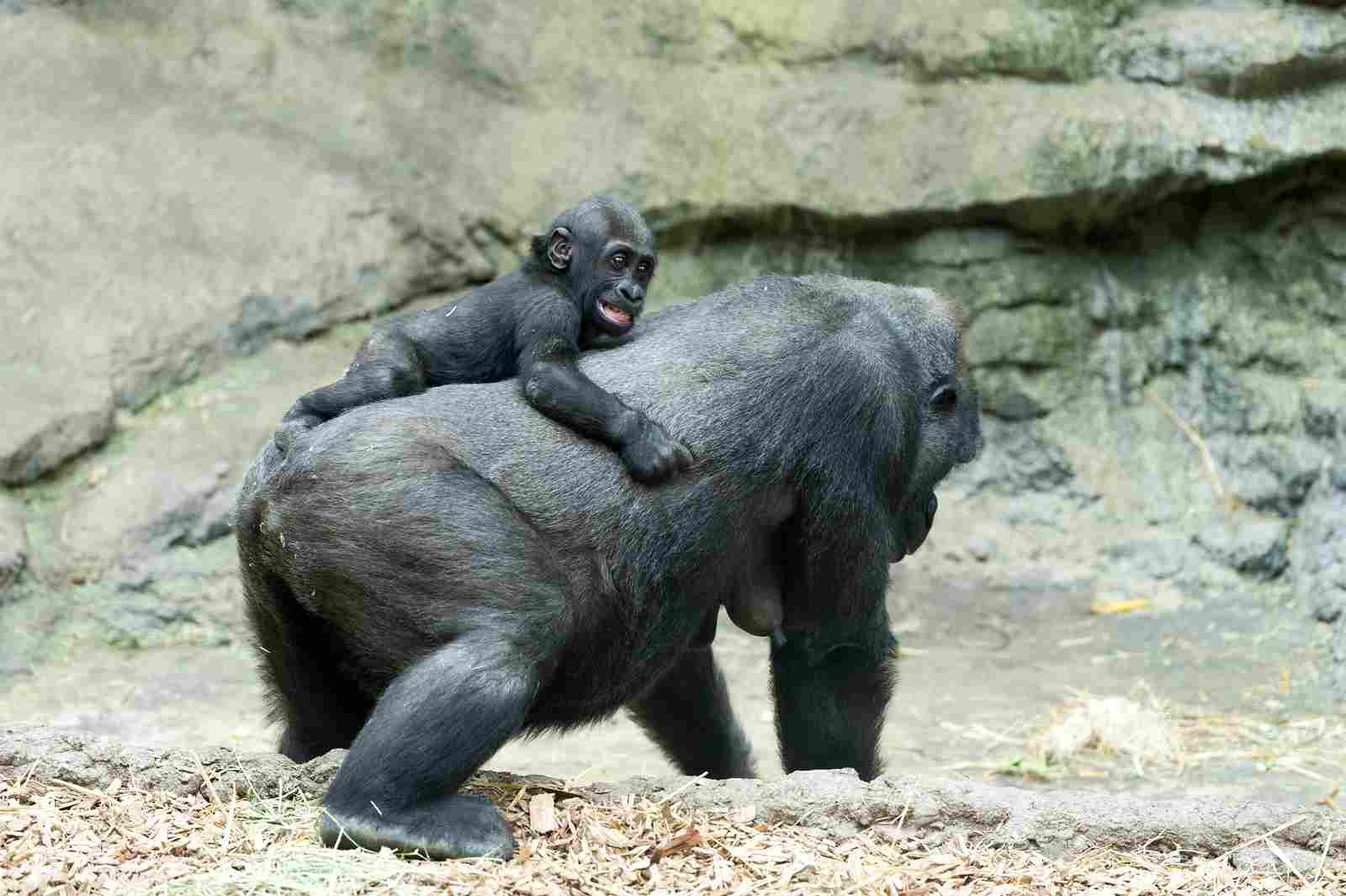
Gorilla:
Strong maternal care; females provide extensive protection and nourishment to offspring.
Silverback males play a protective role within the group.
Bear:
Generally, mothers provide care for cubs, teaching them essential survival skills.
Males may not be involved in parental care.
Comparison: Gorillas display more communal parental care within the social structure, while bears often rely on individual maternal care.
Ecological Implications: Parental behavior influences the survival rates of offspring, contributing to the species’ overall reproductive success and population dynamics.
19. Proximity to Human-Inhabited Areas:
Gorilla:
Inhabit dense forests, with human interactions occurring in proximity to forest edges.
Bear:
Can inhabit a variety of environments, including forests, tundra, and mountains.
May come into contact with humans in search of food.
Comparison: Bears, due to their habitat diversity, might encounter humans in a broader range of environments compared to gorillas.
Ecological Implications: Proximity to human-inhabited areas can lead to conflicts, affecting both human and animal populations, and influencing conservation efforts.
20. Behavior Toward Humans:
Gorilla:
Generally shy and avoid human contact.
Aggressive behavior rare but can occur if they feel threatened.
Bear:
Responses vary; some bears may avoid humans, while others may be more curious or aggressive.
Human-bear conflicts can result from habitat overlap.
Comparison: Both gorillas and bears may exhibit defensive behaviors towards humans, but responses can vary based on species and individual temperament.
Ecological Implications: Interactions with humans can impact the behavior and perception of these species, influencing conservation efforts and mitigating conflicts.
21. Danger Posed to Humans:
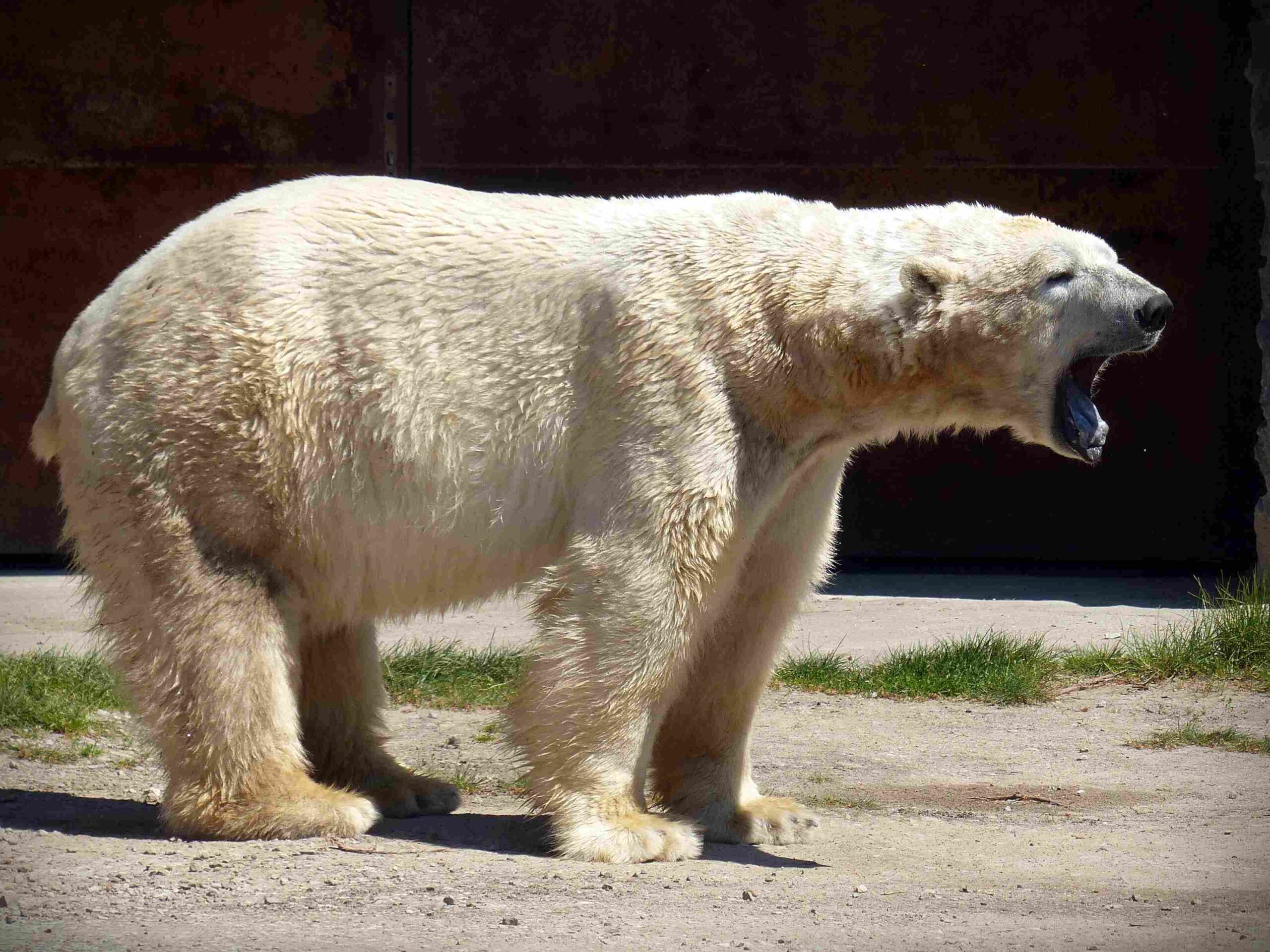
Gorilla:
Rarely pose a significant danger to humans; more likely to retreat than attack.
Aggression usually occurs in self-defense or protection of offspring.
Bear:
Can pose a danger, especially if surprised or provoked.
Brown bears and polar bears are potentially more dangerous due to size and predatory behavior.
Comparison: Bears, especially brown and polar bears, are generally considered more dangerous to humans than gorillas.
Ecological Implications: Understanding the potential danger each species poses to humans is crucial for developing conservation and management strategies that prioritize both human safety and wildlife preservation.
22. Associated Precautions:
Gorilla:
Conservation efforts focus on habitat protection and minimizing human encroachment.
Tourist interactions in protected areas often involve strict guidelines to ensure gorilla well-being.
Bear:
Education on bear behavior to minimize human-bear conflicts.
Bear-proofing food storage in areas frequented by bears to reduce attraction.
Comparison: While both species benefit from conservation measures, precautions for gorillas often revolve around habitat preservation, while bear precautions emphasize minimizing interactions in shared spaces.
Ecological Implications: Effective precautions contribute to the coexistence of humans and these species, fostering conservation efforts and maintaining ecological balance.
23. Conservation Status:
Gorilla:
Varied conservation status for different gorilla species.
Mountain gorillas are endangered due to habitat loss, poaching, and human-wildlife conflict.
Western lowland gorillas are also threatened, facing similar challenges.
Bear:
Various conservation statuses based on species.
Polar bears are vulnerable due to climate change and loss of sea ice.
Some brown bear populations are threatened, while others are stable.
Comparison: Conservation statuses depend on specific species within each group, highlighting the diverse threats faced by gorillas and bears.
Ecological Implications: The conservation status reflects the overall health of ecosystems, as the decline of these species can indicate broader environmental issues that need attention.
Summary and Conclusion:
I. Similarities:
Both gorillas and bears exhibit impressive physical capabilities, including strength and defensive mechanisms.
Intelligence is evident in both species, contributing to their adaptability and survival strategies.
Parental care is a crucial aspect of both gorilla and bear behavior, ensuring the well-being and development of offspring.
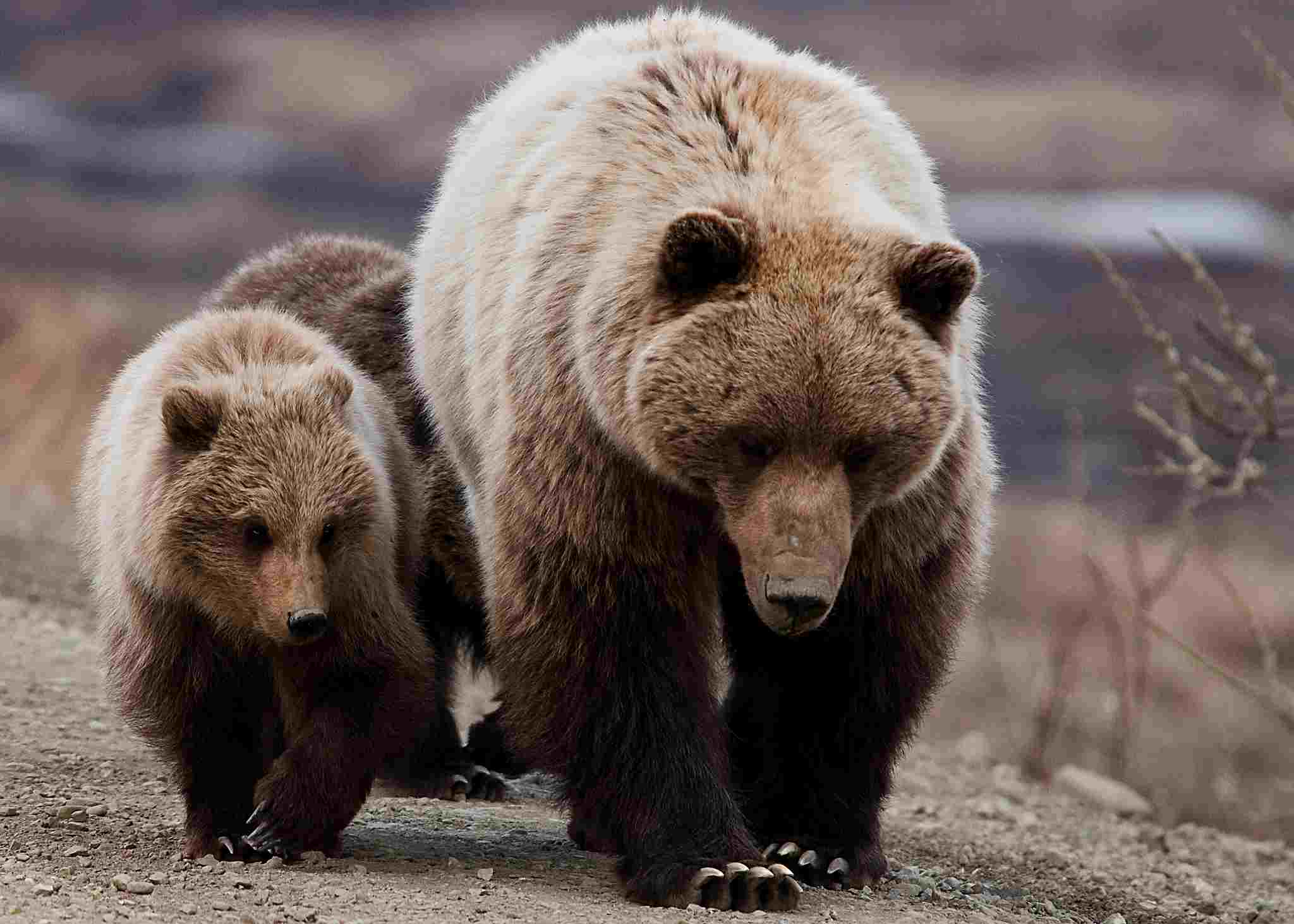
II. Differences:
Taxonomy:
Gorillas belong to the Hominidae family, while bears are classified under Ursidae, showcasing distinct evolutionary lineages.
Appearance:
Gorillas have a primate appearance, adapted for terrestrial and arboreal life, whereas bears display varied appearances adapted to their specific habitats.
Size:
Bears generally surpass gorillas in size, with brown and polar bears being notably larger.
Weight:
Gorillas are outweighed by most bear species, emphasizing the different ecological roles and dietary needs.
Bite Force (PSI):
Both species possess powerful bites, but the PSI varies, reflecting differences in dental adaptations and feeding strategies.
Physical Offensive Advantages:
Gorillas rely on manual dexterity, while bears utilize claws and jaws for offensive actions.
Physical Defensive Advantages:
Gorillas use displays and vocalizations, whereas bears have strong and agile bodies, with some ability to climb trees for defense.
Speed:
Bears generally have a higher top speed than gorillas, reflecting different ecological roles.
Agility:
Gorillas excel in arboreal agility, while bears, despite their size, exhibit surprising agility, especially in climbing trees.
Overall Physical Capacity:
Gorillas excel in climbing and ground mobility, while bears showcase versatility in adapting to different environments.
Habitat Preference(s):
Gorillas prefer dense forests, while bears exhibit adaptability to various ecosystems, including forests, tundra, and mountains.
Tracks:
Gorilla tracks reflect knuckle-walking, while bear tracks showcase adaptations for different terrains.
Lifespan:
Gorillas generally have a longer lifespan compared to bears, influencing population dynamics and genetic diversity.
Mode of Feeding:
Gorillas are primarily herbivores, while bears have a more flexible omnivorous diet.
Intelligence:
Gorillas often exhibit more complex cognitive behaviors compared to bears.
Social Behavior:
Gorillas live in family groups with strong social bonds, while bears are generally more solitary.
Mode of Reproduction:
Gorillas have a stable social structure with dominant males, while bears display diverse mating behaviors.
Parental Behavior:
Gorillas display communal parental care, while bears often rely on individual maternal care.
Proximity to Human-Inhabited Areas:
Bears, due to habitat diversity, might encounter humans in a broader range of environments compared to gorillas.
Behavior Toward Humans:
Both species may exhibit defensive behaviors towards humans, but responses can vary.
Danger Posed to Humans:
Bears, especially brown and polar bears, are generally considered more dangerous to humans than gorillas.
Associated Precautions:
Gorilla precautions often revolve around habitat preservation, while bear precautions emphasize minimizing interactions in shared spaces.
Conservation Status:
Conservation statuses vary for different species within each group, reflecting diverse threats and challenges faced by gorillas and bears.
